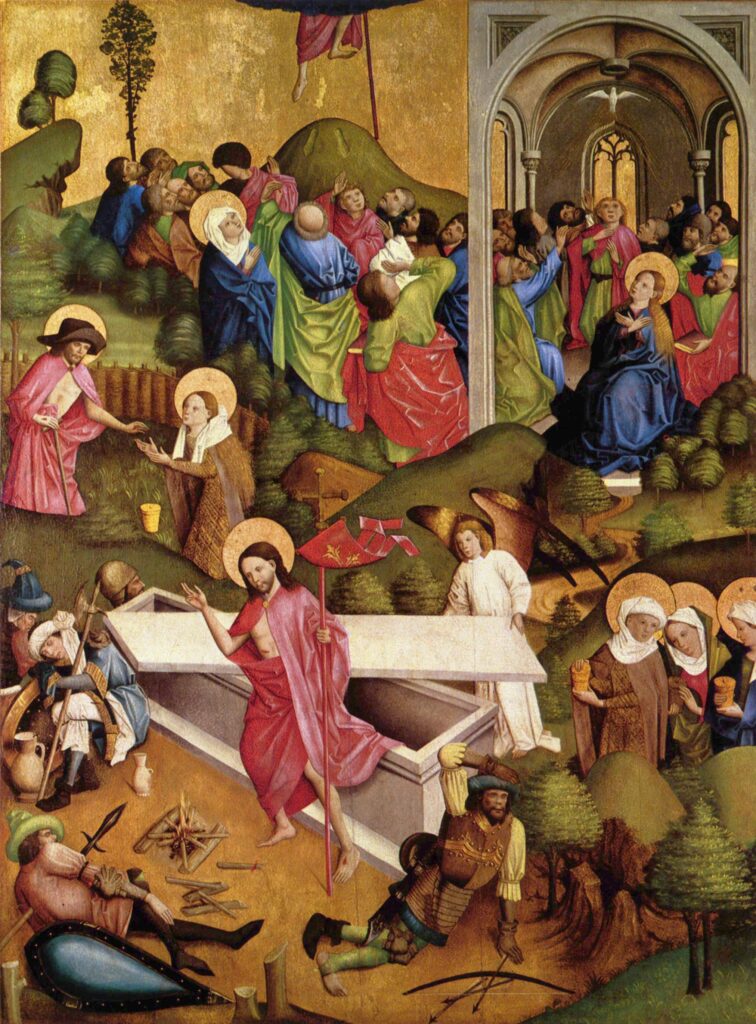This cantata was composed for Ascension Day in 1724, with a second performance in 1731. The Gospel on this day is Mark 16, verses 14-20, and it includes two distinct narratives. In the first section, Jesus appears to his disciples, talks to them about the importance of faith and baptism, and encourages them go out and proclaim the Gospel to everyone. The second section goes on to describe how after saying this, Jesus was taken up to Heaven. Curiously, the libretto for this cantata focuses on the first section of the Gospel, without referencing the Ascension itself at all.
The piece is modestly scored for 2 oboes d’amore, strings and continuo, a 4-part choir, and 2 solo voices (tenor and bass). It’s relatively brief, but it presents a curious bipartite structure with two chorales.
Similarly to other cantatas we recently reviewed, the anonymous librettist opens with a direct quotation from the Gospel: “Whoever believes and is baptized will be saved”. This movement is set by Bach as a chorus, accompanied by the entire orchestra. The instrumental introduction opens with 3 distinct themes, the first one on the oboes on long notes, the second one on shorter figurations on the violins, and the third one in a descending pattern on the continuo line. The two top themes will be picked up by the voices as they enter.
The second movement, on original text, discusses the concept of faith. It’s a da-capo aria for tenor, which survived in incomplete form, lacking a solo violin line which has been reconstructed quite effectively in several versions.
This leads to the first chorale, set to the third stanza of the hymn “Wie schön leuchtet der Morgenstern” by Philipp Nicolai from 1599. Bach takes the hint and uses the well-known chorale tune, setting it as a duet for soprano and alto with basso continuo. While clearly quoting the tune in both voices, he also transforms it to suit the text and adds the obligatory word painting to illustrate “loben” (“praise”).
The next two movements are a recitative / aria set for the bass. Their text is also by the librettist, and it reflects on the importance of faith and baptism as a way to obtain God’s blessing. The recitative is accompanied by strings, and the aria adds the oboe d’amore I in unison to the first violin, with the added interest of having certain passages marked “without oboe” in the score for a change in sonority.
The closing chorale is a hymn by Johann Kolrose from 1535, set as a 4-part texture with the instruments doubling the voices.
